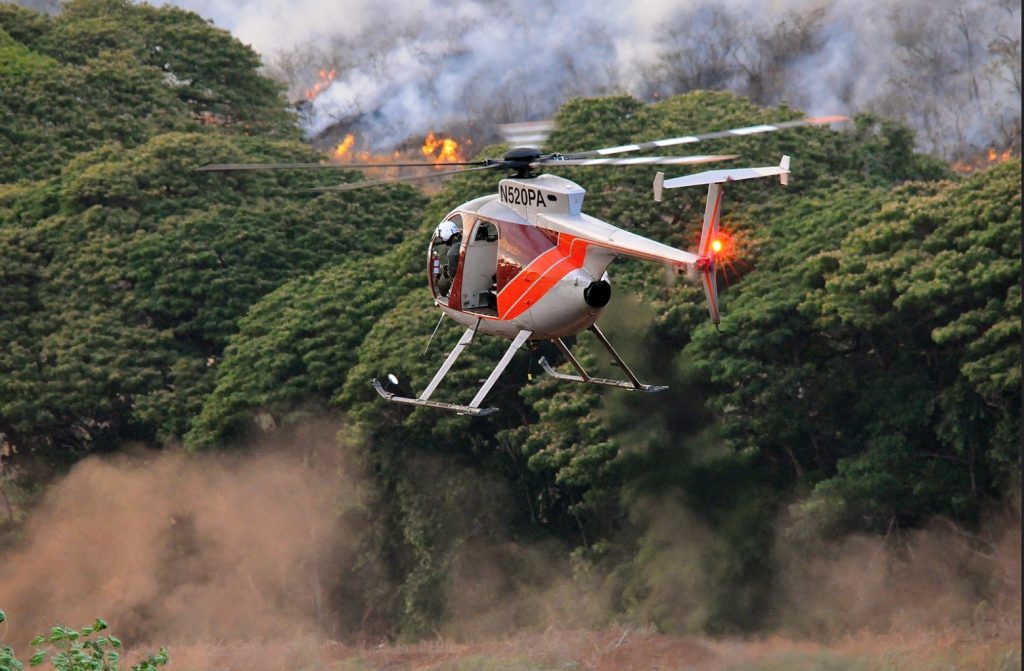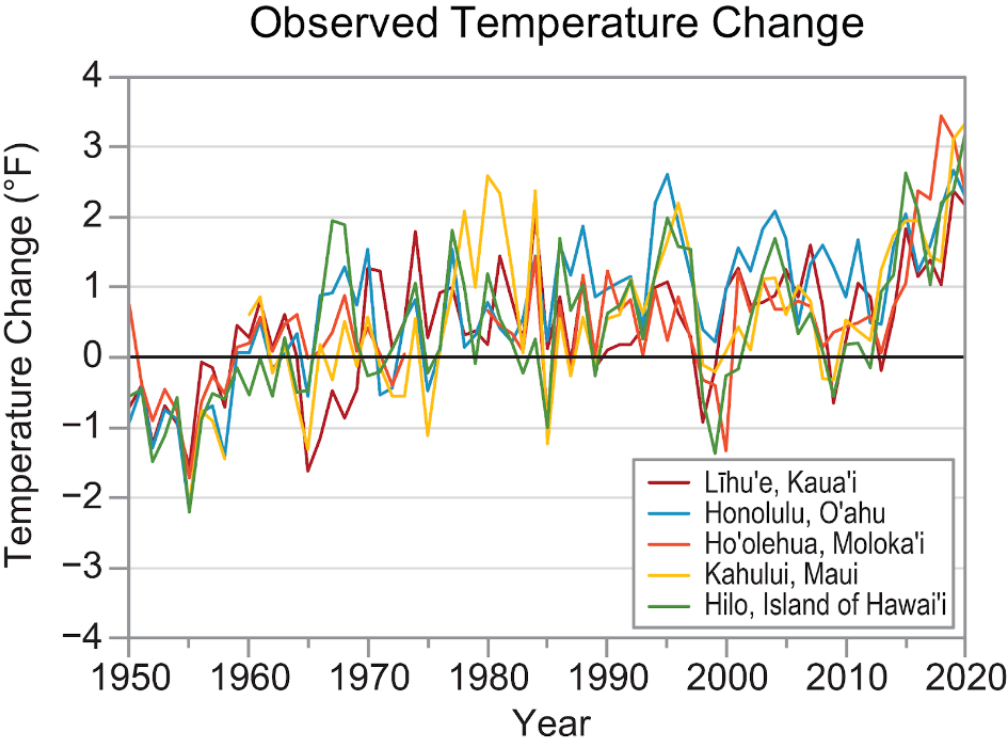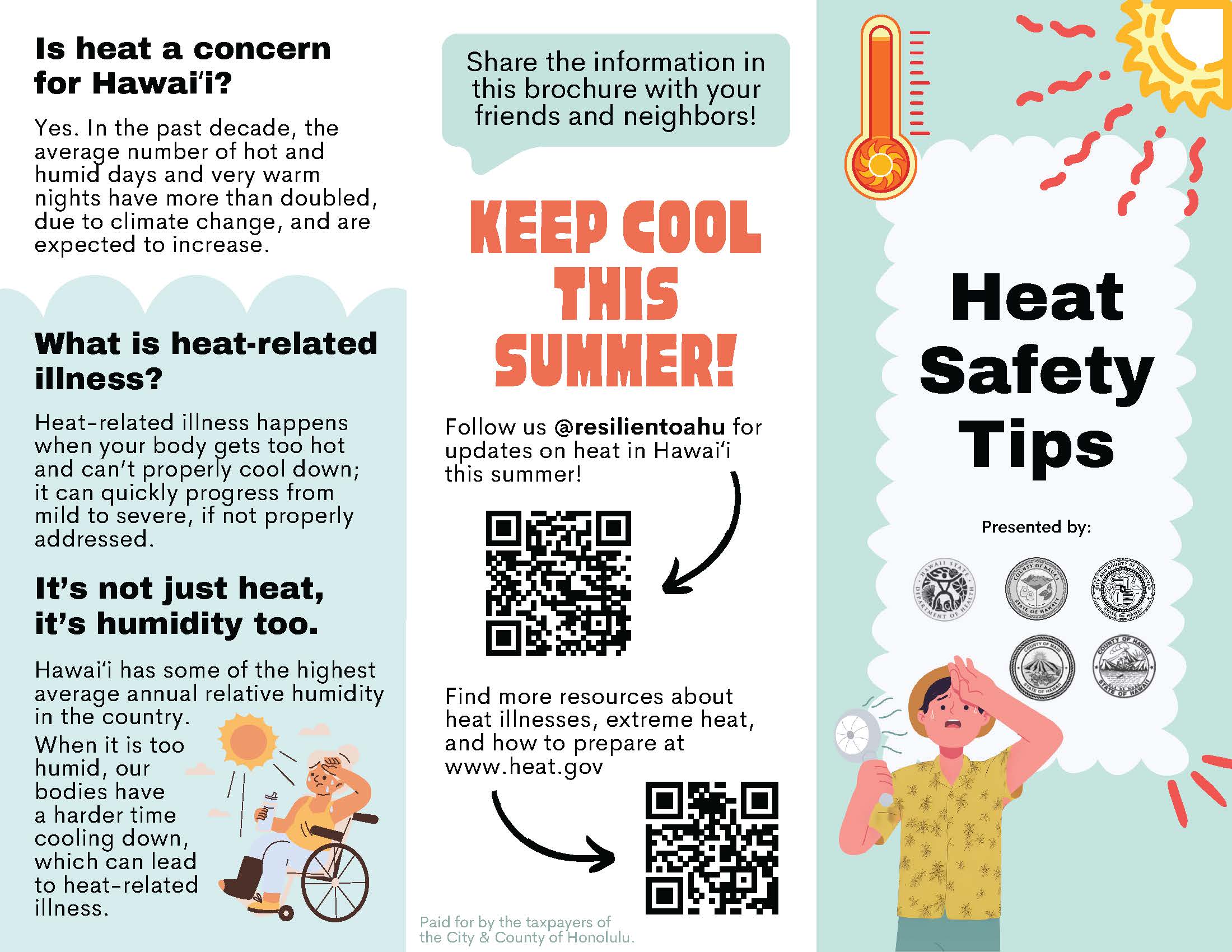- Home
- Critical Decade
- HI Climate Action
- HI Commission
- HI Resources
- HI Equity
- HI Events
Rising Temperatures
WHAT’S HAPPENING NOW?
2015 and 2016 were Hawaiʻi’s warmest years on record, and average air temperatures are 2 degrees warmer than they were in 1950. In 2019, Honolulu experienced its hottest recorded day three times, representing the hottest year ever recorded in the city. The last five years have seen peak average annual temperatures years across all islands. In 2015-2016, it was so hot in Honolulu that emergency public service announcements were issued to curtail escalating air conditioning use because it stressed the electrical grid.
2022 was the fifth warmest year recorded, which was particularly notable since it was a La Niña cool-phase year, meaning that naturally occurring climatic feedback loops which keep atmospheric temperatures moderate are being disrupted. Heating is occurring an estimated 170 times faster than naturally expected. Marine heatwaves have doubled in frequency since 1982, and there is evidence that the deep ocean is experiencing significant warming as well. This creates a positive feedback loop that will disrupt chemical and heat circulation in the ocean for centuries.
The Hawaiʻi Climate Data Portal’s Climate Tool offers visualizations and historical data about temperature across the State.
HOW TO KEEP COOL IN THE HEAT
Check out this great pamphlet created by the the Department of Health in collaboration with the City and County of Honolulu, Kauaʻi County, Maui County, and Hawaiʻi County!
Find more information regarding heat-illnesses, extreme heat, and how to prepare at www.heat.gov.
WHAT DOES THIS MEAN FOR HAWAIʻI?
HAWAIʻI HAS LOST 1.5 MILLION ACRES OF NATIVE FORESTS. Hawaii’s forests are natural water and climate regulators. Without them, we are seeing disruptions in weather and temperature patterns. In other words, climate change and forest loss are working together to make Hawai‘i drier and hotter.
INVASIVE SPECIES ARE WINNING THE WAR. Hotter summers make it easy for fast-growing invasive species like Californian shrubs and grasses to gain a foothold and outgrow our native tree species. On Maui, you may have noticed more grasslands where shady, wet forests used to be. These grasses and shrubs are not only outcompeting our beloved ʻōhiʻa, they are increasing the risk of wildfire. Warmer temperatures mean avian malaria can survive at higher elevations as well. 10 native species are projected to lose 50% of their mosquito-free range by 2100, with 3 species losing over 90%, and 3 species losing 100%.
INCREASING LOSS OF LAND AREA. Worsened by climate change, growing numbers of wildfires don’t just cost us our land. They harm our fragile ecosystems, spread disease, degrade air quality, cause landslides, and destroy valuable resources and infrastructure.
INCREASING LOSS OF CORAL
REEFS. Warmer water is the primary cause of mass coral bleaching and mortality which threatens the survival of coral reef ecosystems and the creatures that depend upon them. Our coral reefs provide essential food security for a large number of Hawaii residents. They provide storm surge and flood protection for coastal properties, recreational opportunities for residents and visitors alike, and income for the many people and businesses supporting those activities. These benefits, and more, provided by coral reefs are severely threatened by climate change.
HIGHER TEMPERATURES THREATEN OUR INFRASTRUCTURE. Increases in sea surface temperatures cause irregular weather patterns like drought, heavy rainstorms, and intense tropical storms. Greater heat wave intensity, increased rates of soil moisture loss, and a doubling of days with a temperature over 90°F and nights over 75°F are straining our energy and water infrastructure.

WHAT’S COMING?
In Hawai‘i, average temperatures could increase by as much as 2.7 degrees Fahrenheit in 2024, and up to 7.2° F at sea level by the end of the century. We can expect this to severely affect our communities, ecosystems, and economy. From a purely market-based standpoint, Hawai’i’s coral reefs alone bring in $385 billion a year.
Evidence indicates that 70–90% of coral reefs will disappear even if global warming is constrained to 1.5°C/2.7°F (very high confidence). There is a more than 50% chance that global temperature rise will reach or surpass 1.5°C/2.7°F between 2021 and 2040; and, under a high-emissions pathway, the world may hit this threshold even sooner. Healthy coral reefs are critical to Hawaii’s economy. Under the high-emissions pathway, coral reef loss in Hawaii is projected to result in an economic loss of up to $1.3 billion per year by 2050.
The economic and public health risks of a changing climate will make certain people –children, the elderly, and economically disadvantaged– especially vulnerable. Hawai‘i must adapt to higher temperatures and work to mitigate their harmful effects through strategies like building design, resilient grids, and education.



